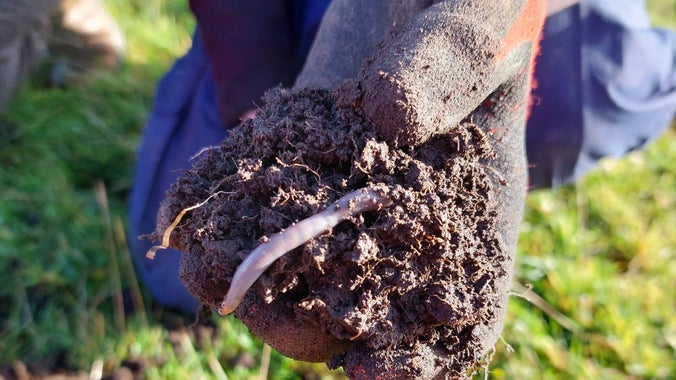
Support nature and wildlife
From squirrels to seals and ancient trees to plants, the places we care for are home to a huge amount of diverse nature and wildlife. Give today and protect these green spaces and animals for years to come.

We're researching how we can improve the soils around ancient and veteran trees to help them stay healthy for longer. We're experimenting with adding earthworms and mulch to the soil around the trees to break up compaction and add nutrients.
Did you know that earthworms are ecosystem engineers? They can change the earth around them by tunnelling up and down through the soil. This allows air and water to get in and circulate.
Worms also create soil structure as they eat and poo, mixing the layers of the soil as they travel through it. We're adding earthworms to the earth around select ancient and veteran trees to see if they help the trees to live longer in better health as we know that soil compaction around older trees can cause them problems.

Mulch is a layer of material such as leaves, wood chips or bark added to the surface of the soil around a plant. Mulching trees enriches the soil with nutrients as it is slowly broken down by microorganisms.
Other benefits include insulating the soil against sudden fluctuations in temperature. Mulch can also slow down evaporation, allowing the soil to retain moisture and prevent it being washed away in heavy rain.
We are working with Bartlett Tree Experts to add earthworms or mulch, or a combination of the two, to the soil around ancient at veteran trees at eight National Trust sites in the south east. We're also monitoring some 'control' trees which have neither mulch nor earthworms added, to see which of the four options works best to keep trees healthy for longer.
We hope that our treatments will have a positive effect and we'll keep monitoring the trees to see how they progress.

From squirrels to seals and ancient trees to plants, the places we care for are home to a huge amount of diverse nature and wildlife. Give today and protect these green spaces and animals for years to come.

Ancient trees are links to our past, they're species-rich habitats that support countless other organisms. Discover what makes a tree ancient and how to recognise them.

Discover the stories behind some famous British wild flowers and how wildflower meadows support important species from butterflies to bees.

Learn how to identify trees from their leaves, bark and shape, how to tell similar species apart and how they change as they get older.

Forest bathing is a way of relaxing and slowing down the mind by immersing yourself in nature. It can help reduce blood pressure, lower stress levels and improve concentration.